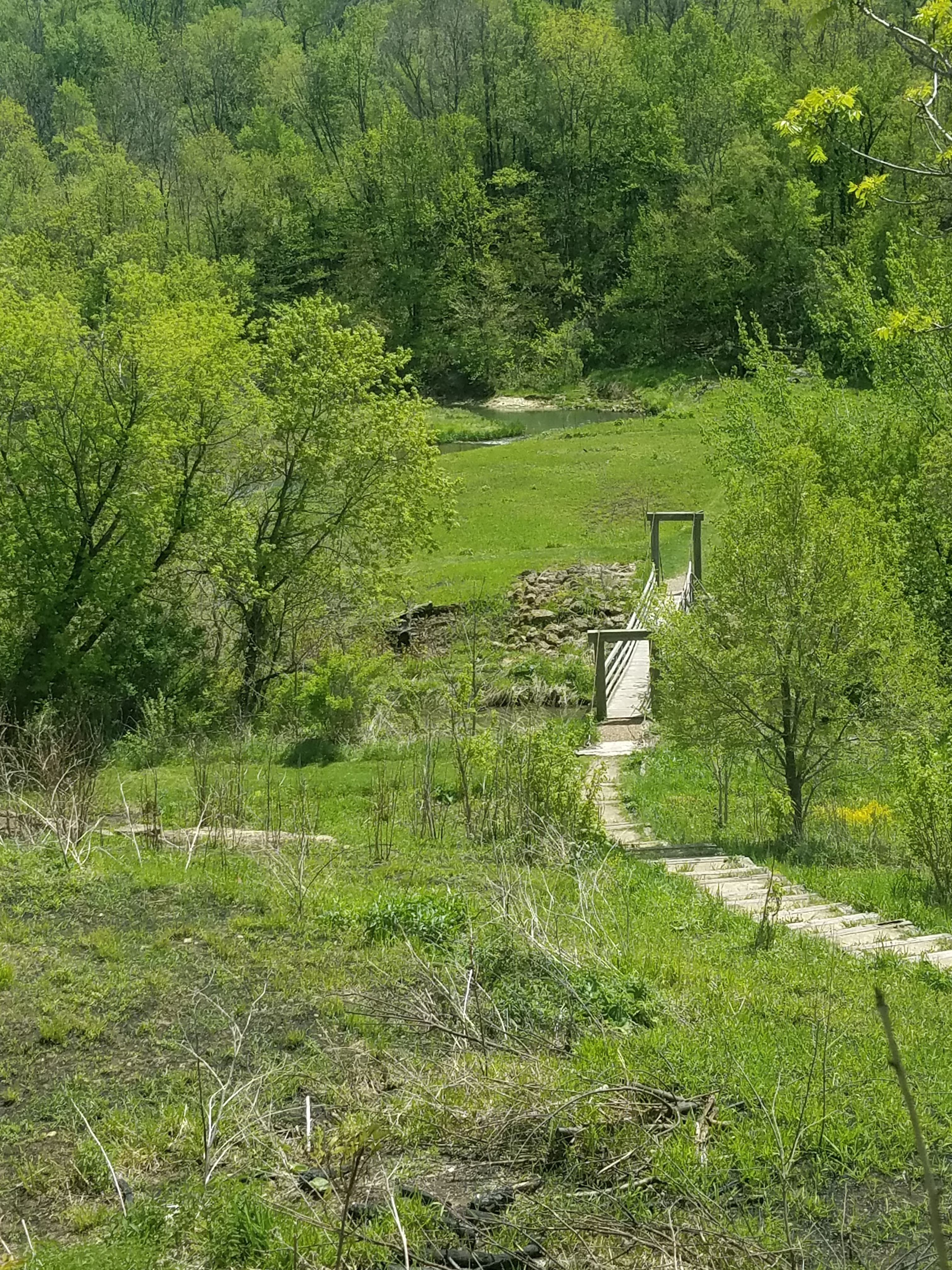
On a warm, sunny April afternoon, I felt the urge to spend time outdoors and decided to hike at Swiss Valley Nature Preserve. My heart filled with anticipation of seeing new spring growth. I looked forward to discovering wildflowers that bloomed. The thrill of seeing blooming wildflowers and identifying them stayed with me as I drove to the nature preserve. In this blog, I describe Swiss Valley and talk about what I saw on my hike. Five features found on this hike include wildflowers, a hanging bog, a prairie burn, a hanging bridge, and an abandoned schoolhouse.
Swiss Valley
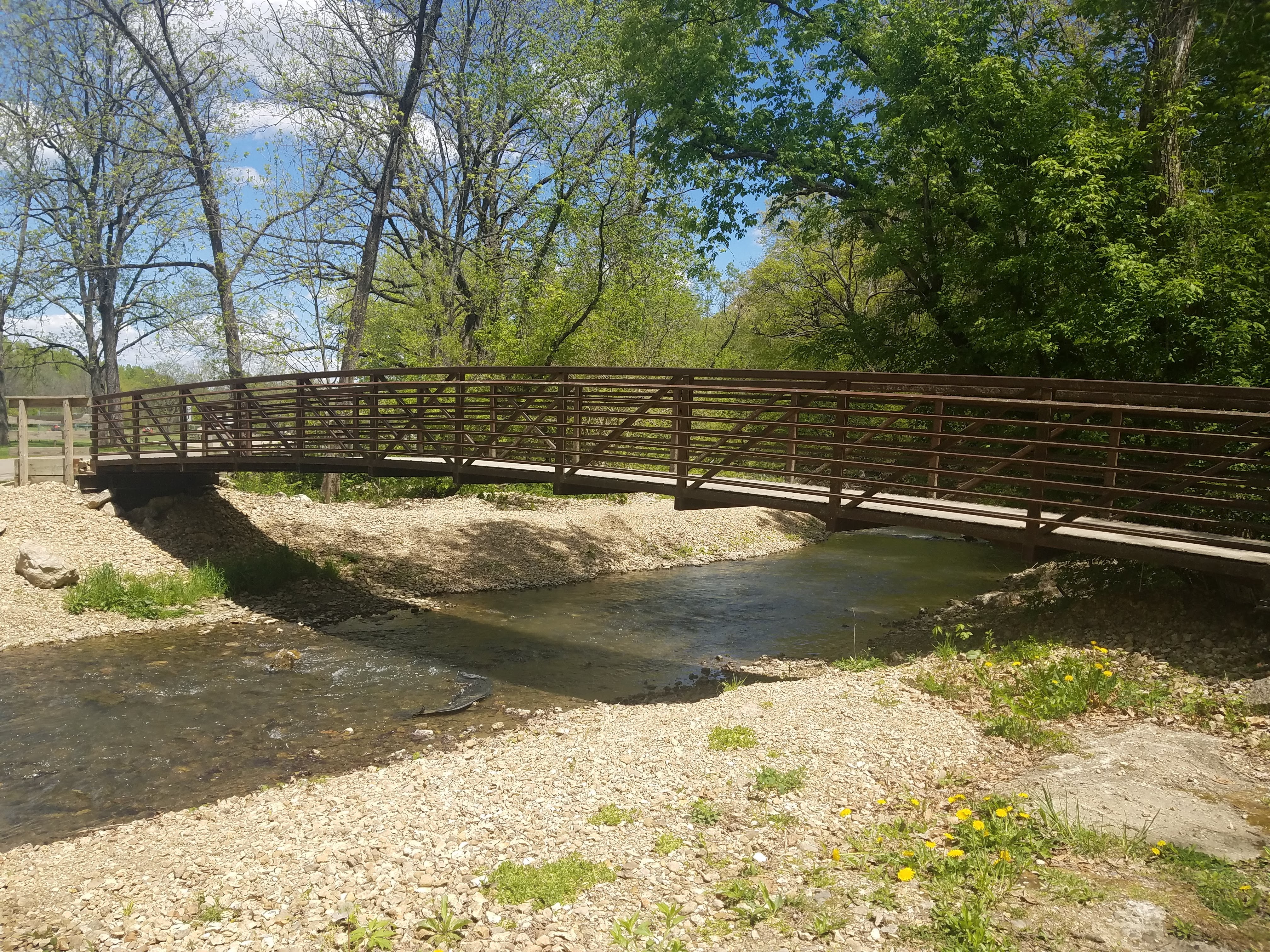
Swiss Valley consists of a park, campground, nature center, and nature preserve in Dubuque County, Iowa. It was named after the Swiss immigrants that settled in the area in the 1800’s.
Swiss Valley Park and Campground
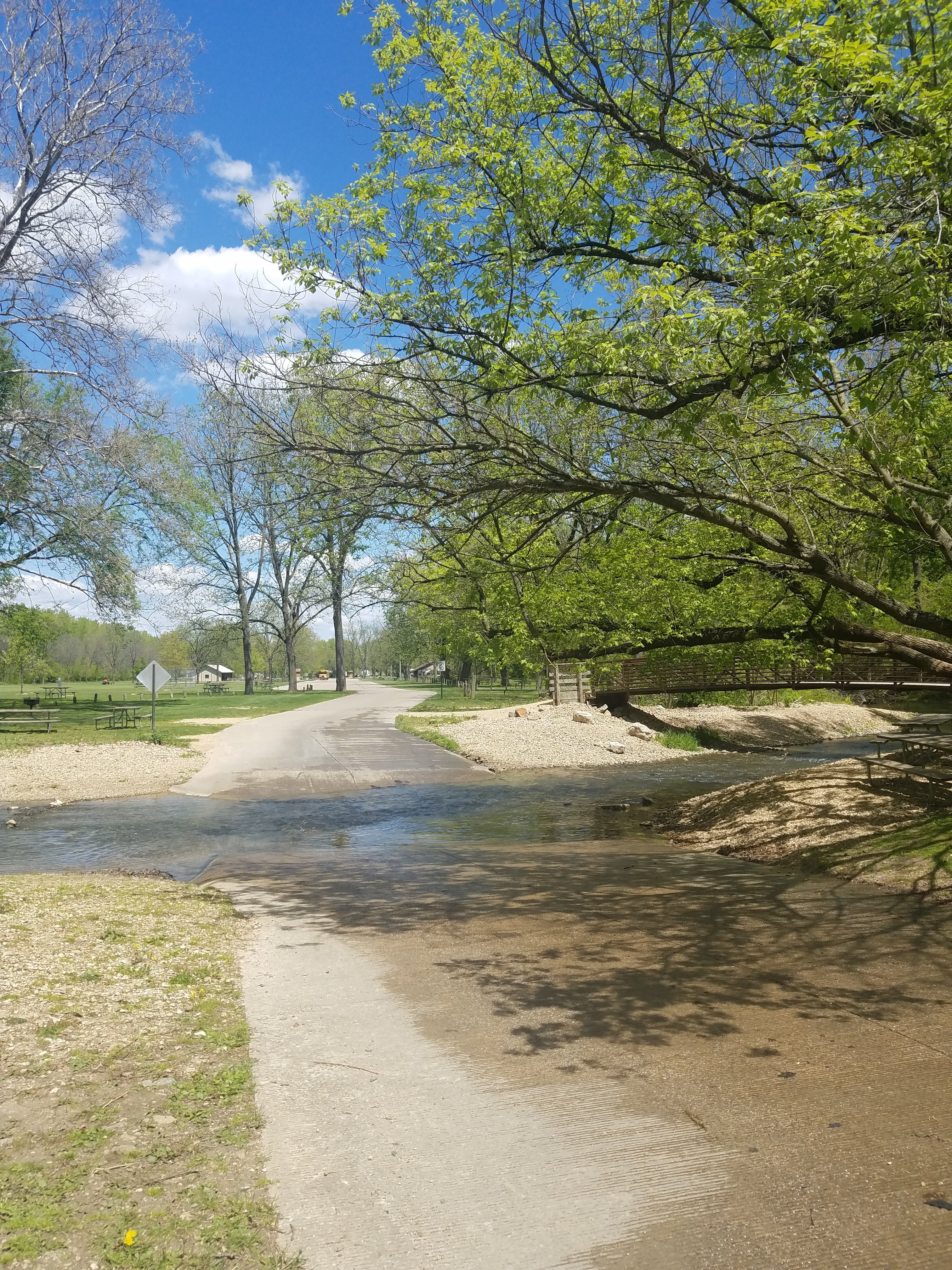
Swiss Valley Park is located 4 1/2 miles southwest of Dubuque, Iowa, on Swiss Valley Road. The 62 acre wooded county park includes a shaded picnic area, picnic shelters available for rent, a playground, and sports fields, including disc golf.
Additionally, Catfish Creek meanders through the park. The DNR stocks the creek with trout for fishing. Vehicles traveling on the park road cross the creek through the water. On the other hand, pedestrians cross the creek on a pedestrian bridge nearby.
Swiss Valley Campground adjoins Swiss Valley Park; however, entrance to the campground is on Whitetop Road, a mile drive from Swiss Valley Park. Some campsites are available for reservations, while the majority are on a first come, first serve basis.
Swiss Valley Nature Center
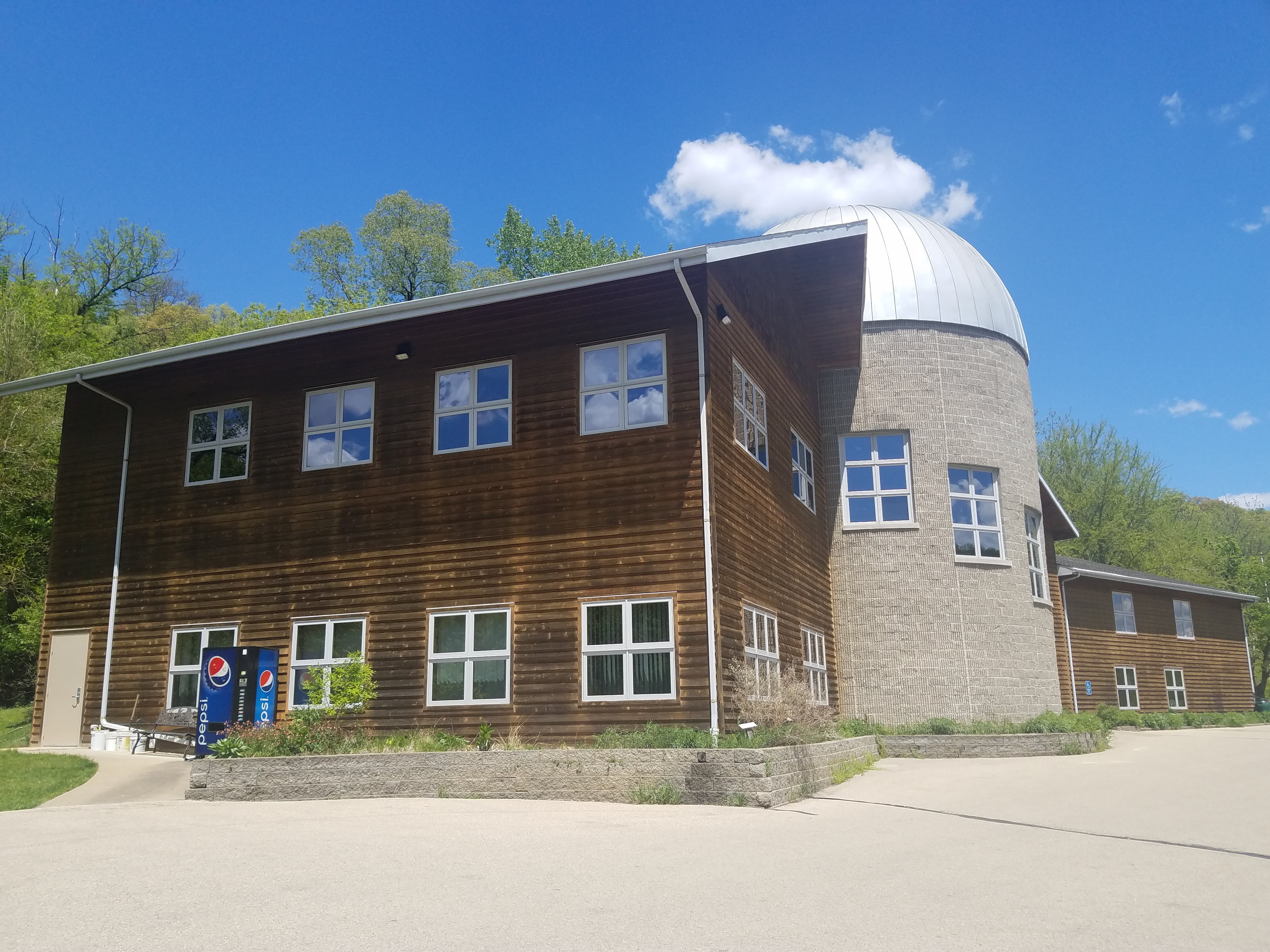
The Nature Center and Preserve is located about a mile and a half west of the park. Inside Swiss Valley Nature Center, visitors find information and displays about the history of the park, natural history of the area, wildlife, and ecology. The building looks like a barn and silo.
Swiss Valley Preserve
Swiss immigrants settled in the area in the 1830’s. Swiss Valley is named after these immigrants. After Dubuque County Conservation Board acquired the land, Swiss Valley Nature Preserve started in 1973. Today, the nature preserve includes 476 acres of woodlands, prairies, and wetlands. Visitors hike, fish, and cross-country ski at the preserve.
Ten miles of hiking trails begin at the parking lot, ranging from flat, easy trails to rocky, windy, hilly trails. The trails connect to each other. Catfish Creek winds through the valley. Stream Bottom Trail follows the creek through the valley, and several other trails emerge on each side of the valley winding through the hills.
Many small streams flow down the hills into Catfish Creek. In addition, the Iowa DNR stocks Catfish Creek yearly with trout. Hence, Swiss Valley Nature Preserve is a popular destination for trout fishing.
The Hike
Woodland Ecology Trail
According to the trail guide, Woodland Ecology Trail is 2.5 miles long. It winds up a steep, rocky hill before it levels out at the top. Additionally, the top features several oak trees. When the trail descends down the hill on the other side, it follows a rocky trail that looks like a road. In the middle of the hill, the trail intersects with the Bobcat Hollow Trail.
From this point, Woodland Ecology Trail makes a left turn and goes to the “Hanging Bog”. Next, the trail continues to loop counterclockwise in the middle of the hill. Finally, it rejoins the part of the trail that descends down the hill towards Catfish Creek.
The Hike Begins
At last, I arrived at the nature center and preserve parking lot. I changed into my hiking shoes, gathered my wildflower book and snack, and placed them in my backpack. Next, I grabbed my water bottle sling and began to hike on the Woodland Ecology Trail.
The surface at the beginning of the trail contains woodchips. Because a woodchip surface is easy to walk on, I started the hike at a fast pace. Soon, I reached the point where I turned to begin the hike up the hill.
Wildflowers Spotted
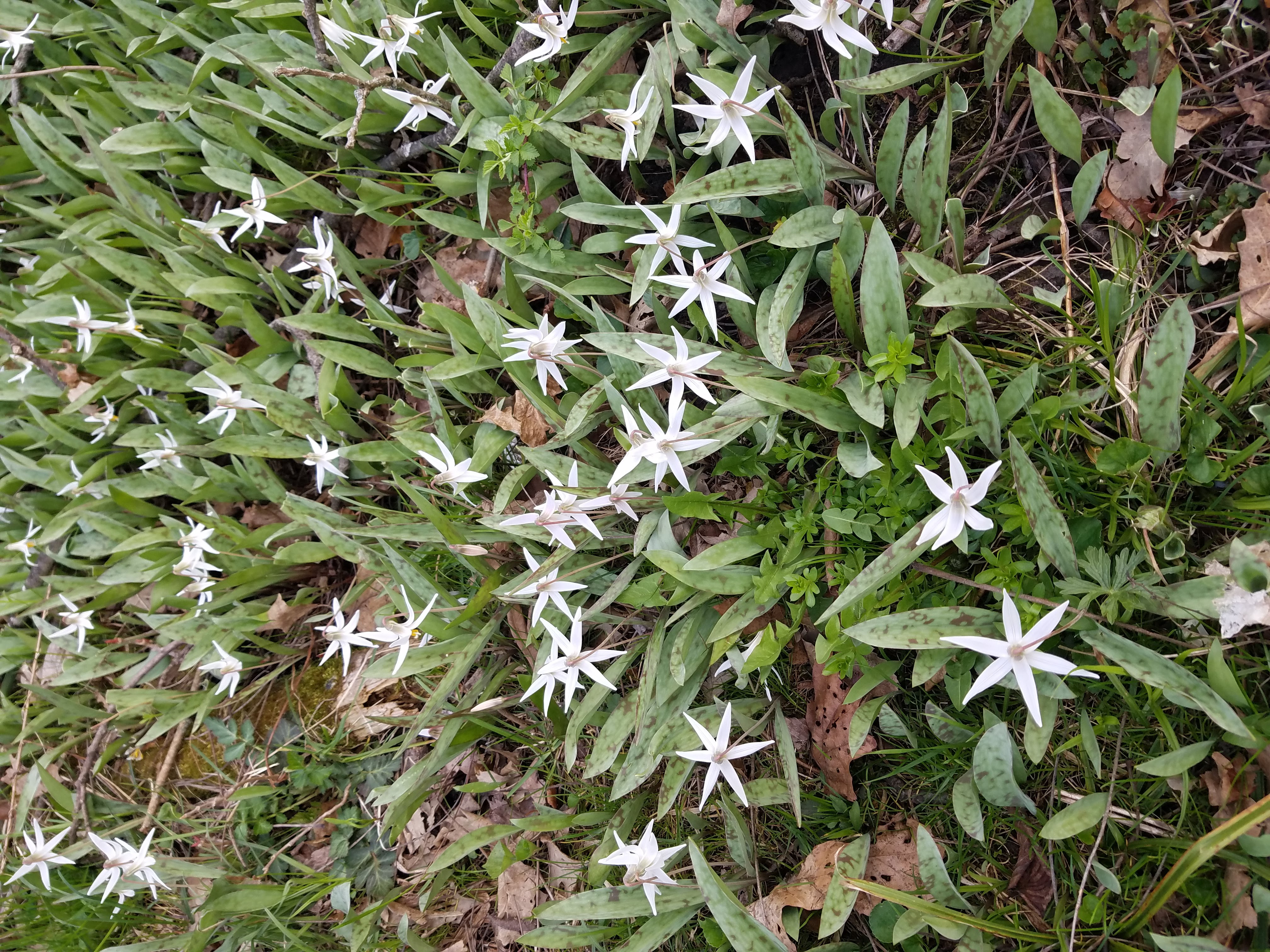
Near this intersection, I noticed white flowers growing on a short stalk between two oblong leaves The leaves looked like leaves of a tulip plant. Unlike a tulip leaf, these leaves had brown spots on them. The flowers had six leaves growing in what looked like two layers. Research in my plant book identified these flowers as white trout lily.
I continued my hike on the Woodland Ecology Trail. On this particular day, I chose to hike clockwise on the trail loop. This means I took the lower part of the loop first and hiked towards the hanging bog, rather than hiking up to the top of the hill first. I wanted to see what flowers had bloomed at the hanging bog area. It was late afternoon, and it would be dark before I finished the long loop.
A bench sits at an intersection where the sign points to the right for the hanging bog. My short rest provided me some time to look at the valley below. Since the trees were bare, I saw several hikers on the Stream Bottom Trail. Additionally, I could see the old abandoned schoolhouse in the distance. Another thrill occurred at this spot; I heard a barred owl. I love the sound of the barred owl; the owl’s hoot gives me joy and puts a smile on my face. Several minutes later, I reached the Hanging Bog.
Hanging Bog
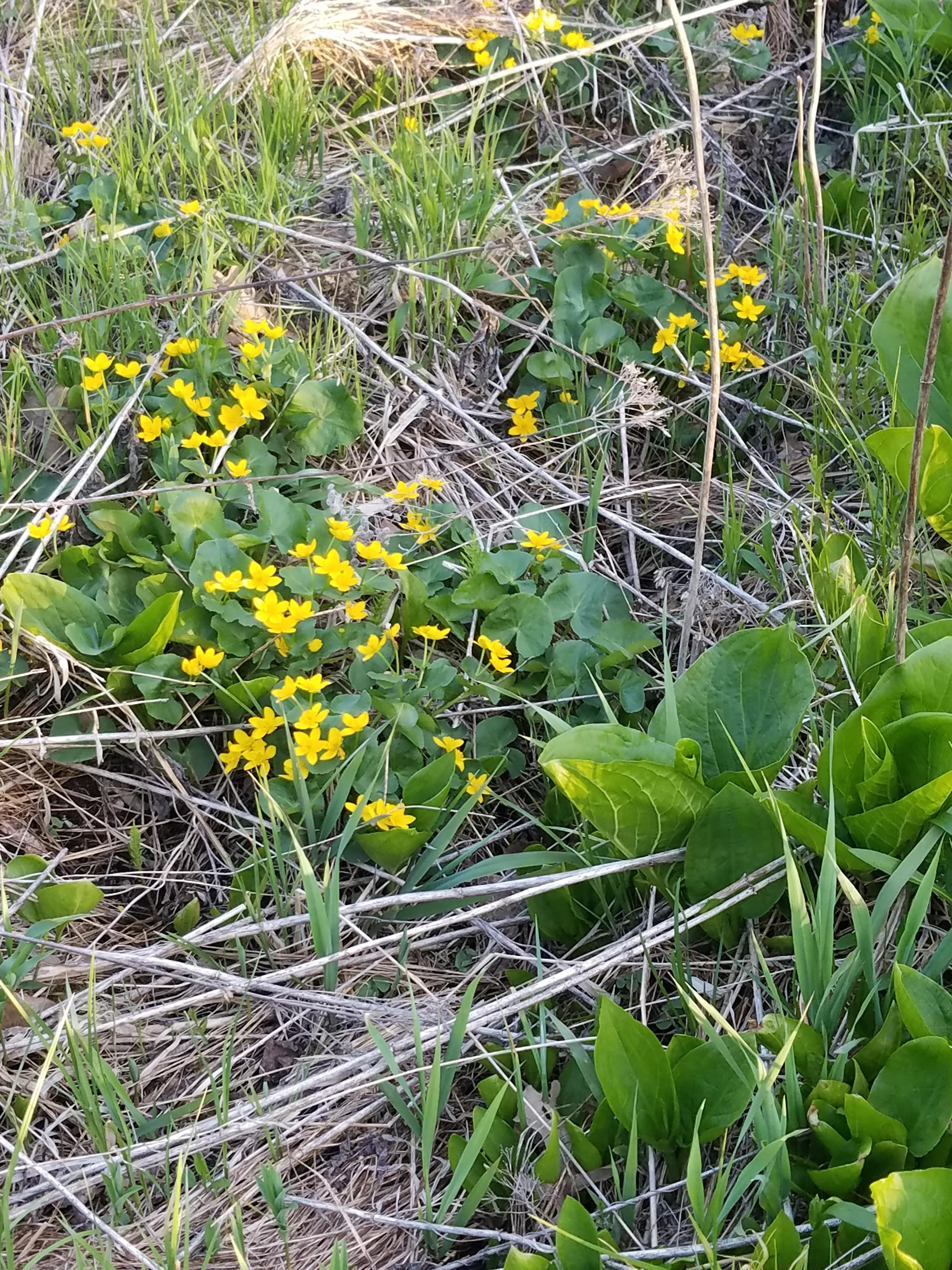
A hanging bog is a saturated area on the lower slope of a wooded hillside. The reason the ground does not dry out is due to a limestone layer close to the surface of the ground that doesn’t allow water to flow through it. Ground water flows across this layer of covered bedrock and seeps down the hillside.
At Swiss Valley, hikers cross the hanging bog on a raised wooden platform. I proceeded to step onto the platform and stopped in the middle to observe the small stream the meanders through the bog. Amongst the bright green leaves, yellow flowers stood out. What a thrill to see flowers blooming on the bog!
At this point, I retrieved my flower book from my back pack to identify them. The flowers, called marsh marigold, looked like yellow daisies with five short petals and emerged from shiny, rounded leaves.
Next, I stood on the wooden platform to listen to the water flow through the bog. The peaceful sound of the flowing water mesmerized me. I watched it for several minutes while reflecting on how thankful I am for scenery like this.
Before I proceeded on my hike, I looked around once more to admire the beauty of the the bog and the forest in the background. The trees had not leafed out yet, and I could see the top of the hill through the bare tree branches. Again, I felt mesmerized and thankful to have seen the flowers and flowing water in this pleasant setting.
This video shows the stream and wildflowers at the Hanging Bog on the Woodland Ecology Trail at Swiss Valley Nature Preserve.
After several minutes of admiring the forest, I continued to hike on the Woodland Ecology Trail until I reached Bobcat Hollow Trail.
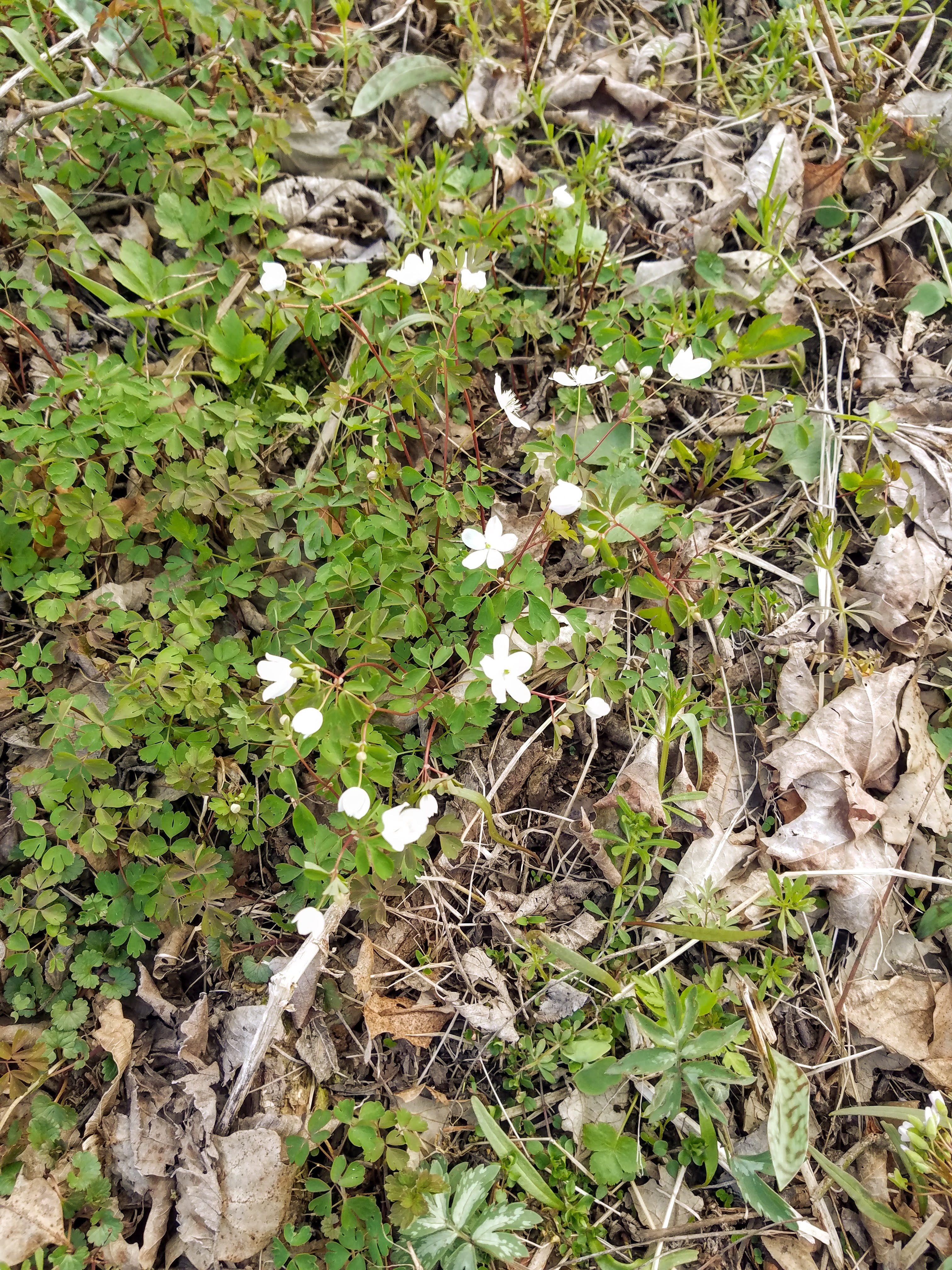
Bobcat Hollow Trail
Next, I turned left onto Bobcat Hollow Trail and hiked down the hill to the valley. At the bottom of the hill, I reached the grassy part of the trail and spotted white flowers in the distance. As I got closer, I noted that the small white flowers had five petals with deep pink veins. The flower stem grows between two leaves that resemble a blade of grass. Next, I consulted my flower book and learned these flowers are called spring beauty.
While observing the white flowers and taking photos, I met a fellow hiker. During our brief conversation, he shared with me some of the things he had seen in the preserve through the years. I spent a few moments admiring the flowers after he continued his hike. Finally, the time came to move on. I continued hiking on Bobcat Hollow Trail until I reached Stream Bottom Trail.
Stream Bottom Trail
Meanwhile, I turned right onto Stream Bottom Trail, which runs along Catfish Creek. Two bridges lie ahead of me, the first bridge crosses a small stream, and the second one, a hanging bridge, crosses Catfish Creek. When crossing the first bridge, I noticed Swiss Valley recently completed a prairie burn to the west of where I was standing. At this point, I proceeded to walk west on the Stream Bottom Trail to look at the prairie burn and quickly snapped a few photos.
Prairie Burn
Previously, I have seen prairie burns in several parks I visited. For some reason, this prairie burn fascinated me. A few days later, I called Swiss Valley Nature Center for more information. Kurt Kramer, a park ranger, answered the phone and provided me with the information I sought.
What is a Prairie Burn?
Years ago, Swiss immigrants settled in the Swiss Valley area. The settlers turned much of the native prairie land into cropland. Swiss Valley Nature Preserve restored some of this area back to the original native prairie.
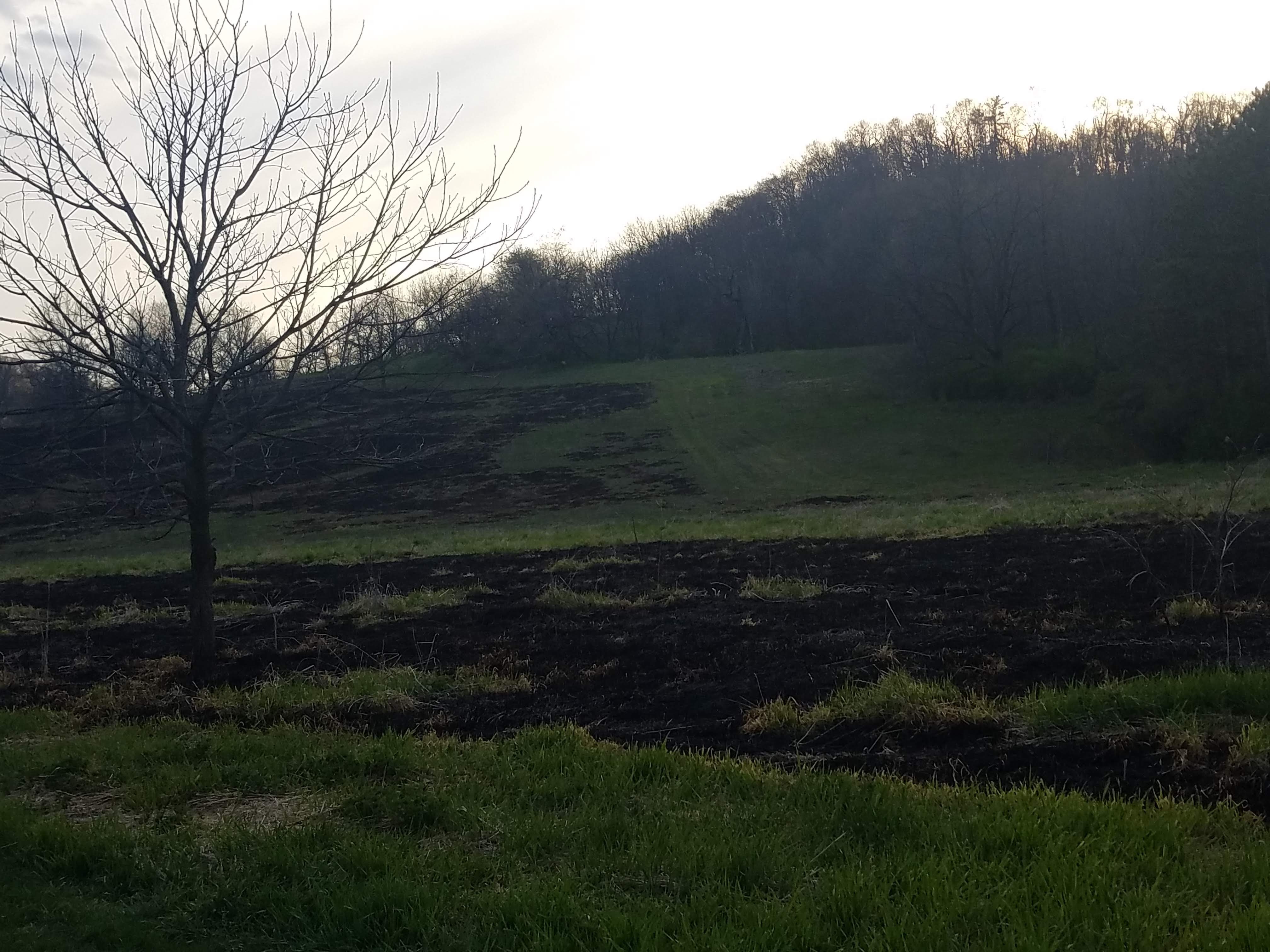
One tool to help manage prairie restoration is a prairie burn. Several reasons include control grasses, control non-native plant species, and control woody invasion. First, the burn removes dead grasses, as well as non-native grasses. Second, native prairie plants withstand the burn because their roots are 8 to 10 feet deep. However, the burn removes non-native and invasive plant species, whose roots are closer to the surface. Lastly, woody plants and trees often grow in the prairies. The fire removes these unwanted trees.
If left to grow, the non-native plants would eventually crowd the native plants and prevent them from growing. When invasive plants are removed, native prairie plants gain more room to grow. In addition, invasive plants take needed nutrients from the native prairie plants, which makes it hard for them to grow. Furthermore, by removing invasive plants, more nutrients are available for the prairie plants.
Who Administers the Prairie Burn?
The park rangers administer the prairie burns at Swiss Valley Nature Preserve as well as at several other county parks in Dubuque County. The rangers are trained and certified to complete prairie burns. Additionally, the rangers occasionally perform timber burns in the fall to control invasive plants, such as garlic mustard and honey suckle.
When is a Prairie Burn Done?
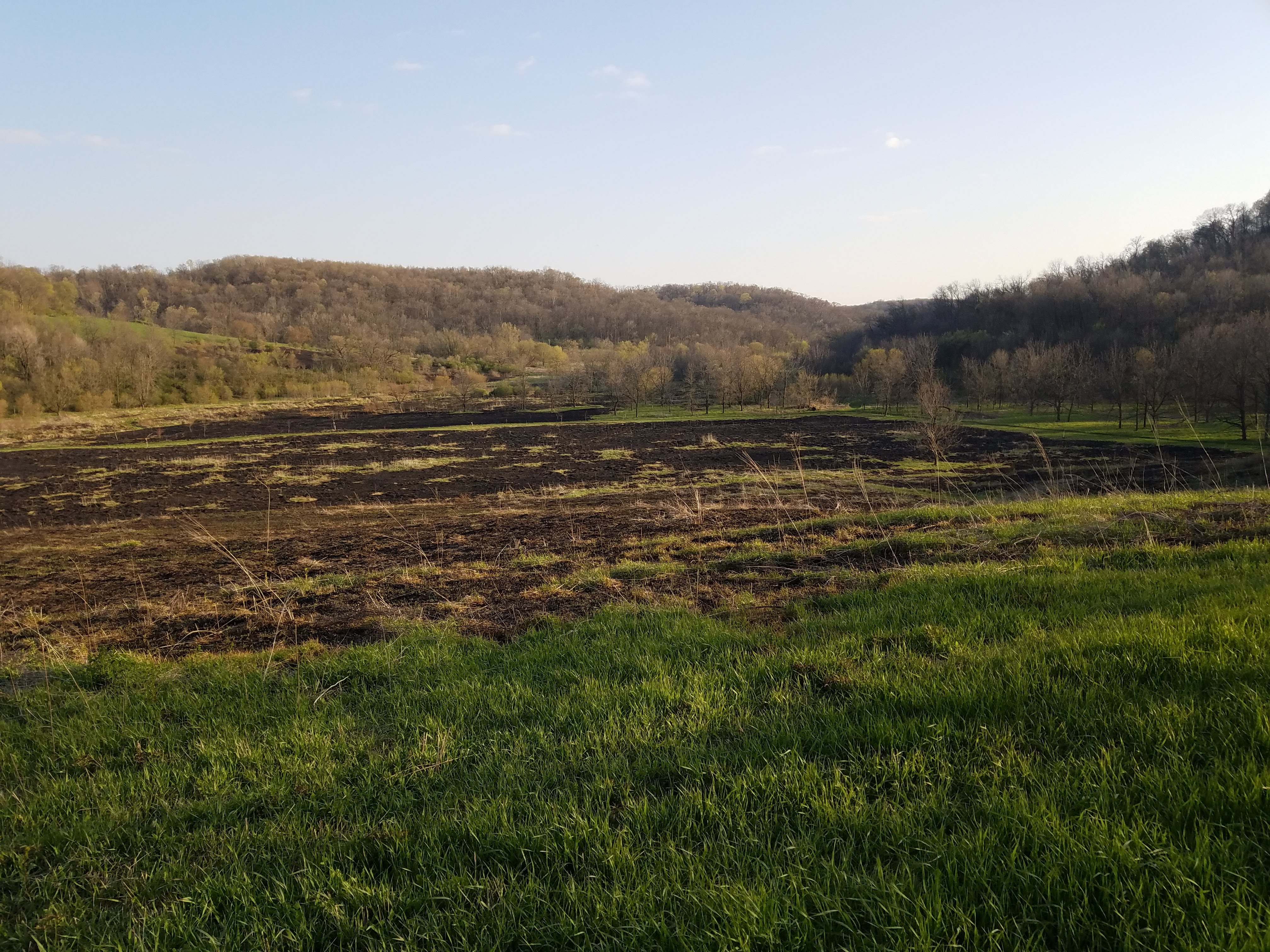
Typically, a prairie burn is carried out in spring. Beforehand, the rangers prep the area that is to be burned. I noticed on my hikes in the fall of 2020 that several areas in the prairie had been mowed around the edge. At the time, I wondered why the mowing had been done. The reason became clear to me after talking to Ranger Kurt. He explained that a mowed boundary forms the edge of the area to be burned. Fire would not cross the mowed portion.
Furthermore, the weather must be perfect in order to start a prairie burn. The rangers watch for wind direction and wind speed. This is important because too much wind in the wrong direction would cause the burn to go out of control. Likewise, the rangers need to be in complete control as they perform the prairie burn.
As I hiked past the prairie burn, I noticed only a portion of the prairie had been burned. Ranger Kurt advised me on this. They want to keep some of the habitat cover for animals who use it. In other words, they do not eliminate all the prairie cover at one time.
The Hike Back to the Parking Lot
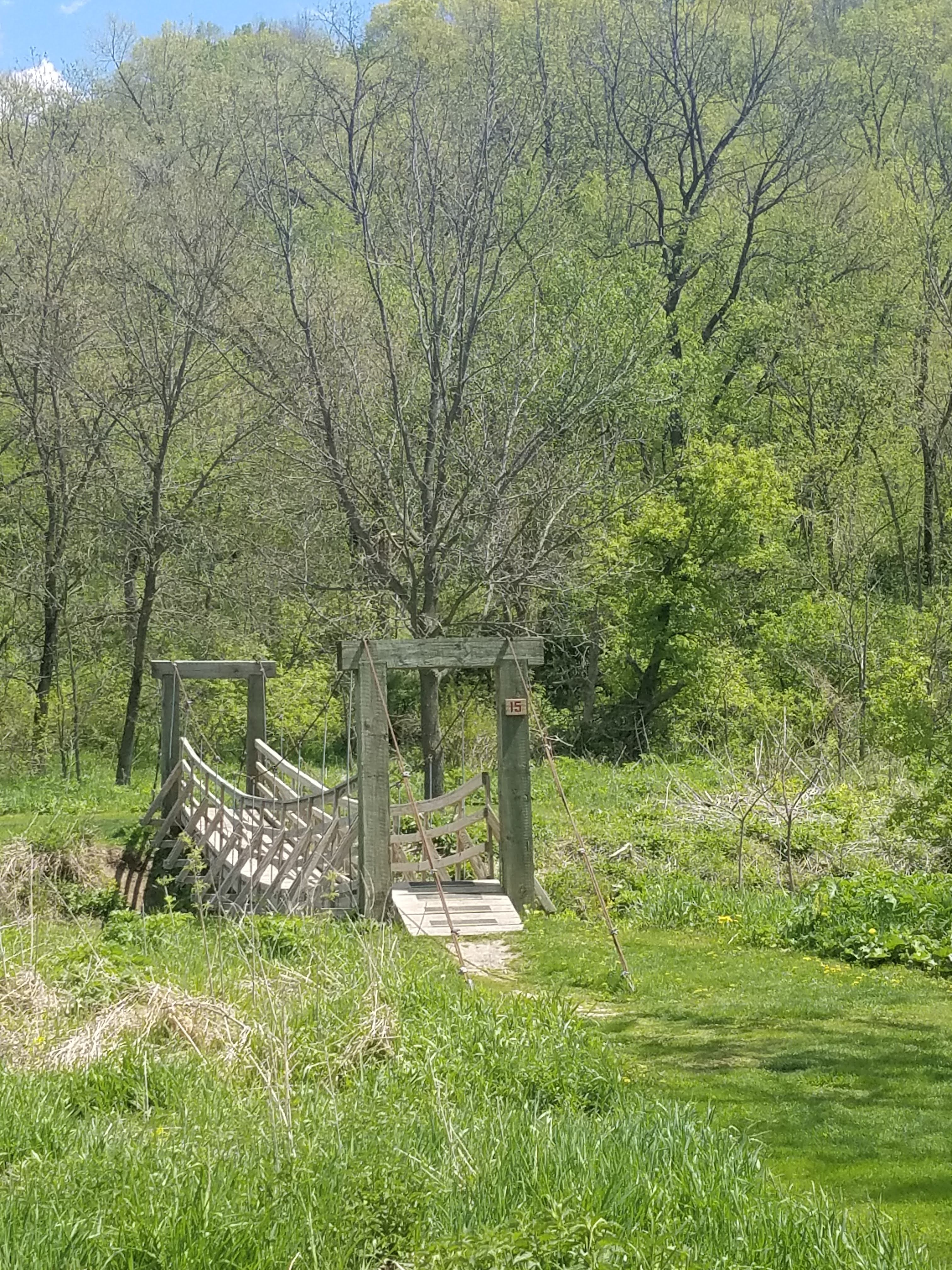
From the prairie burn area, I turned around and walked back to the hanging bridge. While crossing the bridge, it bounced up and down, which made the bridge creak. On the other side, I turned left to begin my hike back to the parking lot.
This part of the Stream Bottom Trail is grassy. Eventually, it turns into a gravel trail. While hiking, I walked past two other trails that lead up the south hill. First, I passed Yellow Bud Trail. Next, I hiked by the Mature Forest Trail. Catfish Creek meandered on my left side.
Nearby, an old abandoned schoolhouse stood to my right. I learned that the schoolhouse was placed in the nature preserve from nearby in the 1970’s in hopes to refurbish it for educational use. Since then, the schoolhouse deteriorated beyond repair. For some, this is an eyesore; others may see a deteriorated schoolhouse as an icon or a part of history.
Final Thoughts
At last, I reached the parking lot. I felt invigorated as I hiked uphill on the last section of the graveled portion of the Stream Bottom Trail. The hike renewed my spirit. I felt like I had been on a two-hour retreat.
To sum up, Swiss Valley Nature Center captivates a person’s senses with its scenic landscape and the sound of flowing water. For that reason, I recommend visiting Swiss Valley if you are in the Dubuque area. Between the park and nature preserve, Swiss Valley offers something for everyone! As has been noted, visitors have the option to picnic, camp, fish, or hike.
To learn more about Swiss Valley Nature Center and Preserve and to find a link to a map of the trails, go to their website here. Information about Swiss Valley Park can be found here. Additionally, the Swiss Valley Campground website is here.
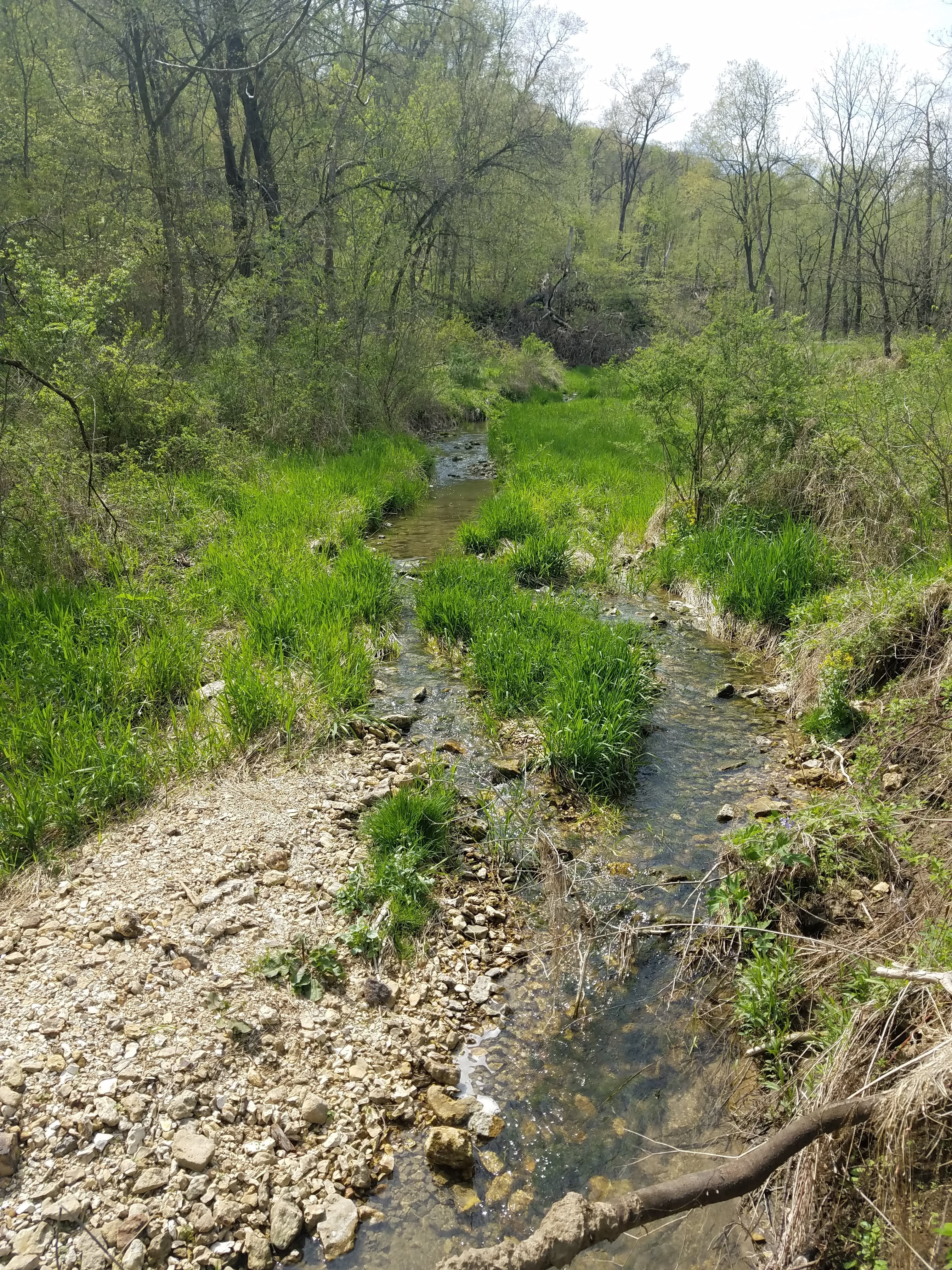

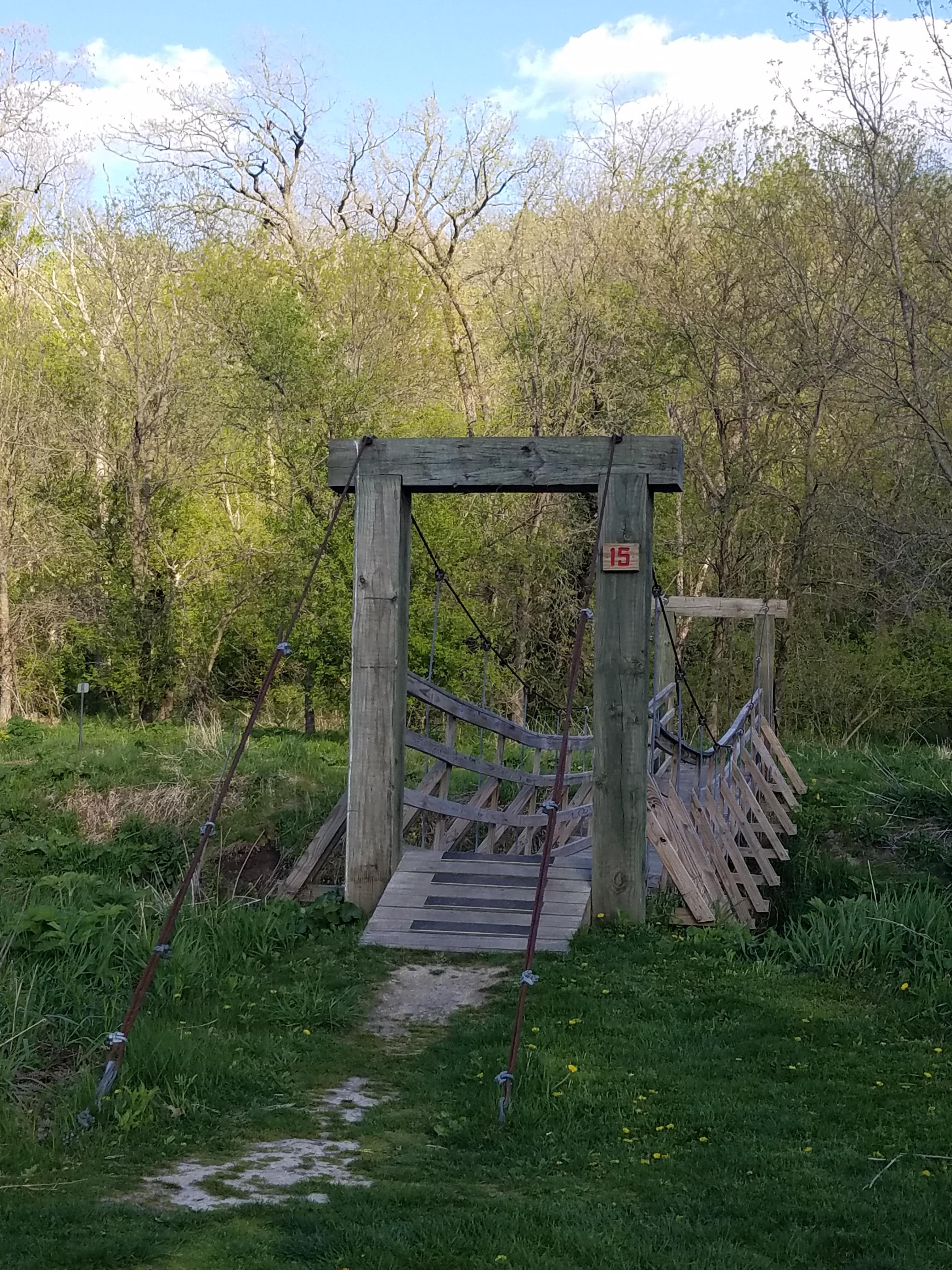
For further reading, see Nancy’s Outdoor Adventures About Nancy section to learn about her passion for the outdoors.
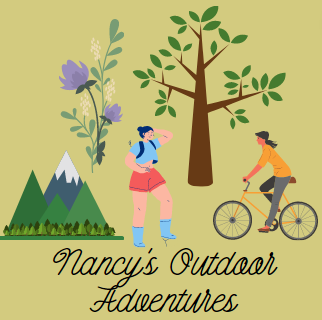
Pingback: Stunning Purple Flowers and Amazing Scenery at Swiss Valley
Nancy, once again a great account of your adventure. I’ve been to Swiss Valley several times, but have never done the nature walks. I especially liked your short video. Thank you for taking us along with you as you hiked and pointing out some of the beauty of nature.
Thank you, Sandy! I’m glad you enjoy reading about my adventures. I enjoy hiking and writing about the hikes.
Sounds like a wonderful walk in the woods when the earth wakes up from the long winter’s nap. I love walking around Canyon Camp in the Springtime. You can see up through the trees as the leaves are just coming out. You are lucky that you can really hike those trails. Keep up the good work of writing your blog. I enjoyed reading about your adventures, and seeing your pics, Nancy! Good job!🥾
Thank you, Jean! I love to hike and started to hike more last year. Hiking helped me through the pandemic. It is fun to discover the beauty that surrounds us. I enjoy writing about my adventures. I’m glad you enjoy reading them.